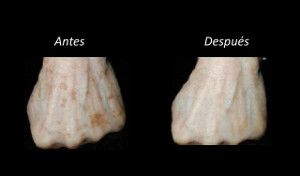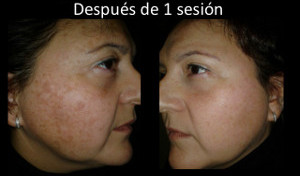Tattoo removal
Every day it is becoming increasingly common to follow the trend to display a creation of decorative tattoos but so does the necessity to remove them for social, labour or sentimental reasons. Previously this was not easy and it involved the use of aggressive methods (electrocautery, dermabrasion, etc...) that process destroyed the skin leaving scars.
Today, laser tattoo removal is the best solution available. The laser breaks up the ink particles into much smaller ones that are eliminated by the body without skin tags.
All lasers used are the most suitable Q-switched systems.
To remove the tattoo art, i.e. those carrying colours, more sessions are necessary than for black or blue, in either case a high success rate in elimination is achieved.
Amateur tattoos, usually black or brown, are often made with more unstable inks and are often applied shallower, so that their removal usually requires fewer sessions.
The ink used is an important factor. The organic ink (Pelikan ink) is easier to remove than those that involve the mixing of metal particles.
At destattoo we have a specific laser: Neodymium-Yag Q-Switched with double frequency that can treat all kinds of tattoos.
Because each tattoo is unique, removal techniques must be individually tailored for each case.
No pain, no scars and no markings.
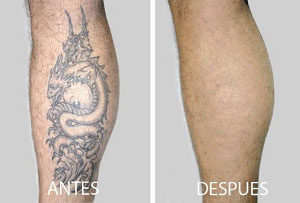
What is the Treatment?
The treatment is performed with the Q-Switch laser combining wavelengths of 1064nm and 532nm, which eliminates the vast majority of pigments, including colours like green and yellow. One of its biggest advantages is that it has the ability to treat dark tattoo inks effectively with minimal complications.
ND Yag Laser: Q-switched emits a beam of light that is selectively absorbed by the ink particles. These particles explode without damaging the surrounding tissues. The effect of this high-energy radiation results in an acoustic effect similar to a crack and causes the detachment of the epidermis by impacting on the treated area laser residues, which produces a white ash coloration disappearing within a few hours.
The ink pigment, now smaller, is eliminated by the action of macrophages (lymphatic system) and transdermally.
This type of laser emits a high intensity of energy in a very small interval of time (nanoseconds) so you can perform treatments faster and safer ensuring minimum stress.
This technique is practically painless, but if you prefer, we can apply a topical anesthetic cream before.
However, during treatment, the area will be numb with cold.
Once the session is complete, which is usually very quick, antibiotic ointment is applied and the treated area is covered. The use of a regenerative ointment in the first days after treatment is recommended.
In the course of 4 to 6 weeks our body through the lymphatic system will show phased elimination of the micro pigment particles. There should not be more than 8 weeks between sessions as there are studies showing that the removal process slows down.
It is extremely important after each session to protect the skin from solar radiation.
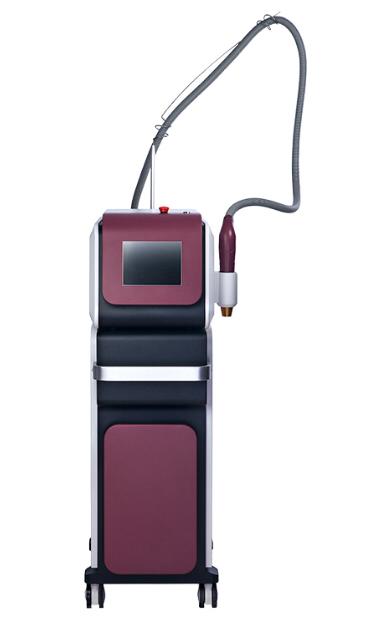
Removing permanent makeup
As is the case with tattoos, you can eliminate the micro pigmentation used in permanent makeup, such as; outlining the line of the lips, increasing the appearance of eyebrows, eyelid liner, today this is possible thanks to Yag Q_Switched and the use of the latest technology the Nd laser.
The laser acts exclusively on micro pigmentation particles, leaving the skin intact.
Normally, it takes 1-3 sessions to remove and recommended time between sessions is usually 3 weeks.
It is extremely important after each session to protect the skin from solar radiation.
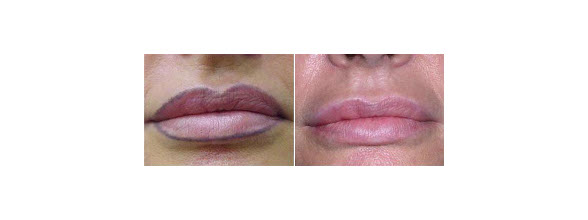
Removing skin blemishes
One of the great advantages of using the laser ND: YAG Q-switched, is that we can safely remove in a few sessions blemishes and stains that appear on the face, chest and hands.
These spots associated with aging are caused by prolonged exposure to sunlight and hormonal causes, including pregnancy.
Uniformity and radiance is restored to your skin with dramatic results following this hyper pigmentation removal treatment.
Normally, it takes 1-3 sessions and recommended time between sessions is usually 3 weeks.
It is extremely important after each session to protect the skin from solar radiation.
